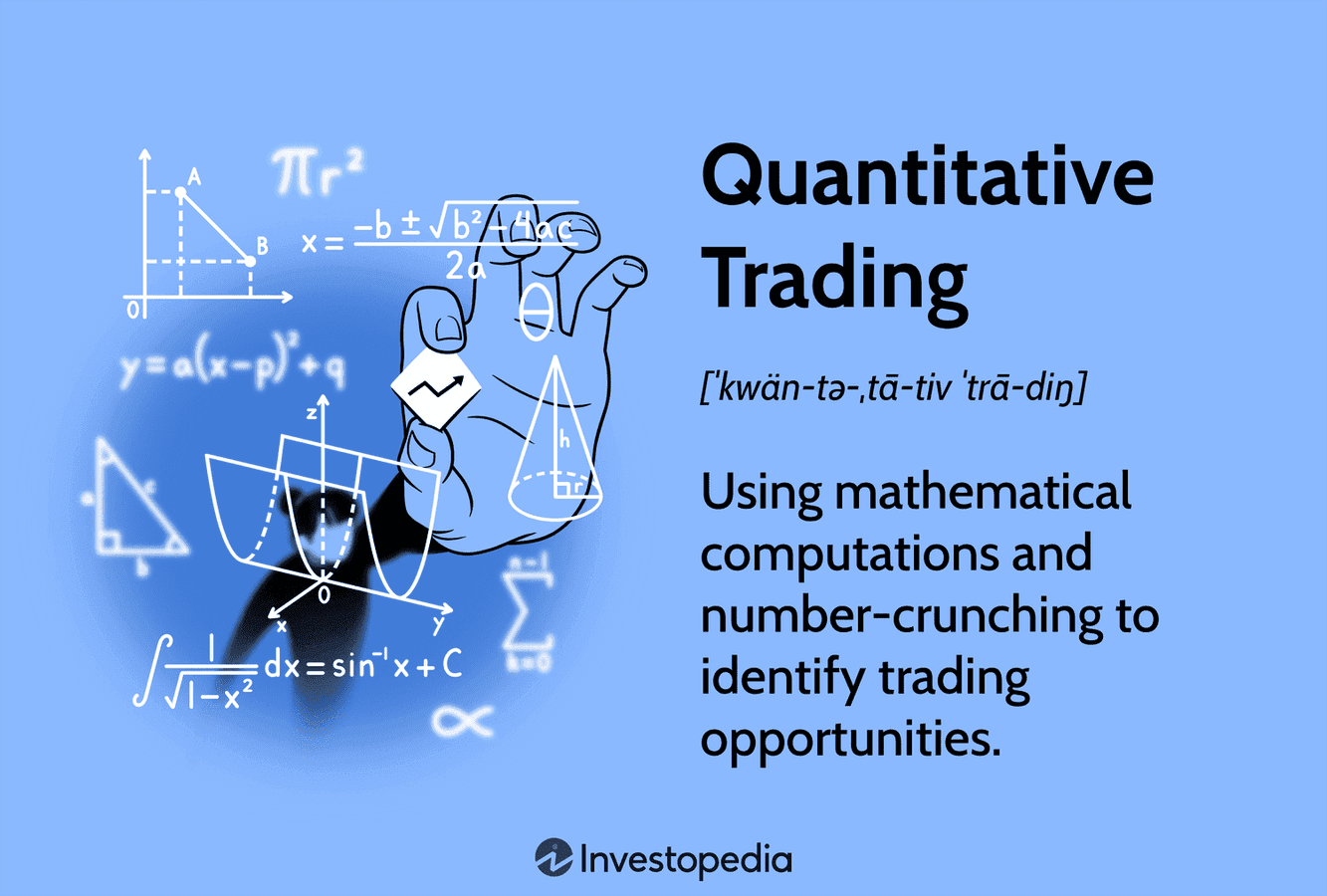What is Quantitative Finance?
Table of Contents
- Introduction: Why Finance Needs Quants
- What Are Stocks? A Beginner’s Guide
- How Are Stock Prices Determined?
- What is Quantitative Finance?
- Key Concepts and Fundamentals
- Quant Soc: Learning, Building, Innovating
Introduction: Why Finance Needs Quants
Finance has always been about making decisions under uncertainty. But in today’s world, markets move faster, data flows endlessly, and complexity grows by the day. Traditional intuition and experience are no longer enough. That’s where quants — quantitative analysts — come in.
Quants use mathematics, statistics, and programming to understand how markets behave and to design strategies that manage risk and generate returns. From pricing complex derivatives to building algorithmic trading systems, quantitative methods allow us to see patterns and opportunities hidden in the noise of financial data.
In short, finance needs quants because modern markets demand data-driven decision making. Whether you’re an investor, a risk manager, or a student curious about the world of finance, quantitative thinking gives you the tools to navigate and succeed in today’s financial landscape.
What Are Stocks? A Beginner’s Guide
When a company wants to expand beyond its current limits, it needs money. To raise those funds, the company can look for investors — people or businesses willing to provide capital. One common way to do this is by selling part of the company’s ownership in exchange for cash.
This ownership is divided into units called shares. Shares can be sold privately between a small group of investors or publicly through stock exchanges. Think of a stock exchange as a giant marketplace where shares are bought and sold, much like products in a supermarket.
But what does owning a share actually mean? In essence, a share represents partial ownership of the company. This often comes with the right to receive dividends — payments made by the company to shareholders as a reward for their investment. If you own one share, you may receive one dividend payment.
The size, frequency, and even existence of dividends depend entirely on the company’s management. Some companies pay dividends regularly, others pay them occasionally, and some reinvest all profits back into growth instead. When dividends are planned, companies typically announce them to the public a few months in advance.

The trading floor of the New York Stock Exchange.
How Are Stock Prices Determined?
When a company goes public, it raises money by offering shares to investors. Initially, the price is set during an Initial Public Offering (IPO), but once shares begin trading on a stock exchange, prices are no longer fixed by the company. Instead, they move according to supply and demand.
On an exchange, prices are determined through a continuous auction. If traders expect the company to perform well, demand rises and the price increases. If confidence falls, sellers dominate and the price drops. This tug-of-war between buyers and sellers is the foundation of stock pricing, a topic we explore further in our Market Microstructure & Trading course, which covers order books, liquidity, and the dynamics of auctions in detail.
It’s important to recognize that the market price of a stock is not always its fair value. Mispricing is common — stocks are often overvalued or undervalued compared to their fundamentals. This gap between price and value is exactly what creates opportunities for traders and investors.
Beyond stocks, financial markets include instruments like bonds, currencies, and derivatives (futures, options, swaps). Derivatives allow traders to speculate or hedge risk, often using leverage, where a small investment controls a much larger exposure. Leverage magnifies both gains and losses, making derivatives powerful but risky. Their pricing, risk dynamics, and applications are core topics in the Financial Mathematics branch.

This diagram is a classic way to explain the difference between market price and intrinsic value of a stock.
What is Quantitative Finance?
There are three common approaches to financial analysis: fundamental, technical, and quantitative.
Fundamental analysis focuses on the business itself. Analysts study company financial statements, industry trends, competitors, management quality, and even investor sentiment to estimate a company’s fair value. For example, an analyst might review Apple’s quarterly earnings reports, forecast iPhone sales, and compare them with competitors like Samsung before deciding whether Apple’s stock is undervalued. This method requires deep expertise in accounting and finance, and it relies on information beyond stock prices.
Technical analysis takes the opposite view. Instead of studying the business, it focuses purely on price and volume data. Traders use charts, patterns, and indicators such as moving averages, RSI (Relative Strength Index), or MACD to predict short-term movements. For instance, if Tesla’s stock repeatedly bounces at a certain price level, a technical analyst might treat that as a “support level” and expect it to rise again.
Quantitative analysis — what we focus on at Quant Soc — combines and expands on both approaches. It uses mathematics, statistics, and computer science to analyze large datasets and reduce human bias. A quant might build a regression model to link macroeconomic variables with stock returns, use machine learning to forecast volatility, or construct an algorithm that executes trades in milliseconds. Quantitative methods rely on both financial fundamentals and historical price data, but transform them into models that can be tested, improved, and automated.
In the last 40 years, quantitative strategies have consistently outperformed traditional approaches, and today they power some of the world’s largest financial institutions — from hedge funds like Renaissance Technologies, Citadel, and Two Sigma to investment banks like Goldman Sachs and J.P. Morgan.

Investopedia - a useful resource of news on stocks, investing, and finance.
Key Concepts and Fundamentals
Quantitative finance is broad, interconnected, and endlessly exciting. At Quant Soc, we divide the field into several branches — each with its own balance of mathematics, statistics, data science, and computer science. You can approach them separately or study them together; many members explore multiple areas and build strong, interdisciplinary skill sets.
If you don’t enjoy heavy mathematics, start with Machine Learning & AI, which develops deep expertise in techniques that are highly valuable both inside and outside finance. If you’re more interested in markets and decision-making than raw coding, explore Portfolio & Risk Management. If you want to dive into the mathematical foundations of modern finance, then Financial Mathematics is your home. And of course, you’re never limited to just one — many of our members move across all branches.
Each course includes practical tasks inspired by real industry work. You can download worksheets, complete hands-on exercises, and build a portfolio of projects — the kind of portfolio that demonstrates skills employers expect for six-figure entry-level quant roles.
Here are the core areas we cover:
Financial Mathematics
- Pricing theory (derivatives, options, futures)
- Stochastic processes (Brownian motion, Itô calculus)
- Martingale pricing, Black–Scholes–Merton model
- Term structure models (Hull–White, HJM, CIR)
Statistics & Econometrics
- Regression models (linear, logistic, quantile)
- Time series analysis (ARIMA, GARCH, cointegration)
- Volatility forecasting
- Factor models (Fama–French, PCA)
Portfolio & Risk Management
- Modern Portfolio Theory (Markowitz)
- CAPM, APT, multifactor models
- Risk measures: VaR, CVaR, Expected Shortfall
- Stress testing and scenario analysis
- Hedging strategies
Machine Learning & AI in Finance
- Supervised learning (regression, classification)
- Unsupervised learning (clustering, PCA, anomaly detection)
- Deep learning (RNNs, LSTMs, Transformers for time series)
- Reinforcement learning for trading and execution
- NLP for news, sentiment, and filings
Market Microstructure & Trading
- Limit order books (liquidity, order flow imbalance)
- Bid–ask spreads, slippage, transaction costs
- Execution algorithms (VWAP, TWAP, POV, Almgren–Chriss)
- High-frequency trading (HFT) strategies
- Statistical arbitrage and pairs trading
Numerical Methods & Computation
- Monte Carlo simulation
- Finite difference methods for PDEs
- Optimization methods (convex, stochastic, evolutionary)
- Risk-neutral pricing via simulation
- Parallel computing (GPU, distributed systems)
Quant Soc: Learning, Building, Innovating
At Quant Soc, we welcome everyone — no prior experience required. Our lessons are designed to be accessible even to those with no background in mathematics or computer science. If you’re already a postgraduate or an industry practitioner, don’t worry — our advanced sections and projects will be challenging enough to keep you engaged.
Events We Organise
We host a wide variety of events across Edinburgh, ranging from academic to practical to recreational:
-
Academic-focused: discussions on research articles, structured lessons, and guest lectures from professors and industry professionals.
-
Practical workshops: hands-on sessions covering trading, strategy development, and programming skills.
-
Competitions and hackathons: team-based challenges where members build trading algorithms, backtest strategies, and compete for performance.
-
Recreational activities: film screenings and social events — yes, there are plenty of excellent investing and quant-related films worth watching (IMDB 7+ and higher).
Projects We Build
Active members can also take part in larger-scale projects. These combine knowledge from all the areas of quantitative finance — from financial mathematics to machine learning — to develop working algorithms that can be tested, refined, and even deployed for real profit. Participating in these projects not only gives you practical, resume-ready experience but also connects you with peers, mentors, and industry contacts.
Additional Materials
-
Youtube video from Socratica — examples of strategies and short intro into what Quant is
-
The Quants: How a New Breed of Math Whizzes Conquered Wall Street and Nearly Destroyed It — A great book on how financial markets work and what quants do
- A short article that might clarify some of your questions
